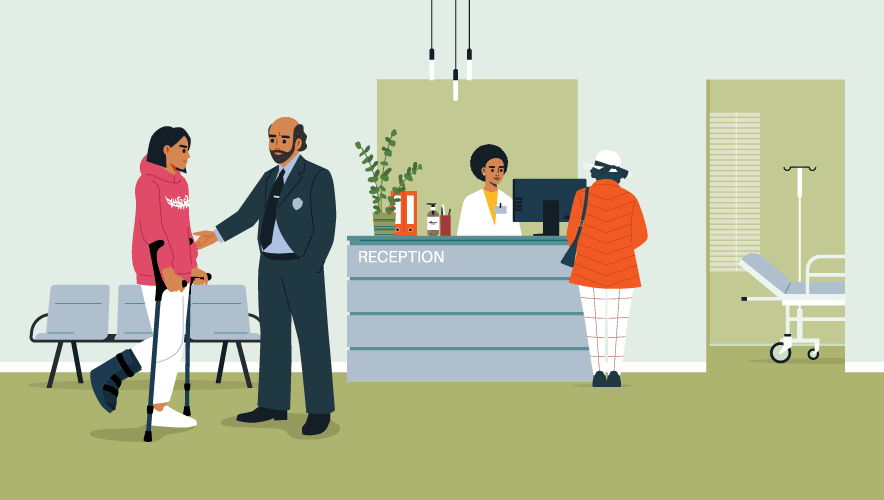In School Shooting Settlement, Uvalde Officials Commit to Systemic Changes
The city of Uvalde, Texas, reached a settlement with the families of 17 children who were killed and two children who were injured in a 2022 elementary school massacre. To avert a lawsuit, the city will overhaul its police force, create a permanent memorial to the victims of the shooting—including the 19 children and two teachers who were killed—and pay $2 million, The New York Times reported.
The settlement was announced yesterday in Uvalde, two days before the two-year anniversary of the attack. The families said that the settlement with the city was capped at $2 million—roughly 7 percent of the city’s 2023-2024 total budgeted revenue—because “they didn’t want to bankrupt the city where they still live,” the Associated Press (AP) reported. The city’s insurance coverage will cover the settlement.
The city agreed to a new “fitness for duty” standard and enhanced training for city police officers. An attorney for the families, Josh Koskoff, said during a press conference that the state’s failure to protect students started long before the shooting, noting that Texas failed to provide small communities like Uvalde with resources to recruit and train qualified officers.
As part of the settlement, the city agreed to designate 24 May as a day of remembrance, build a community center, provide mental health services for survivors and victims’ families, and do a better job of maintaining the cemetery where many victims are buried, the Times outlined.
At the same press conference where the settlement was announced, the families said they filed a new $500 million federal lawsuit against 92 Texas Department of Public Safety (DPS) officers who were among hundreds of law enforcement personnel that waited 77 minutes to confront the gunman at Uvalde’s Robb Elementary School, according to the Texas Tribune.
“Nearly 100 officers from the Texas Department of Public Safety have yet to face a shred of accountability for cowering in fear while my daughter and nephew bled to death in their classroom,” Veronica Luevanos, whose daughter Jailah and nephew Jayce were killed, said in a statement.
According to the Tribune, the families' lawsuit “will likely need to overcome a judicial doctrine called qualified immunity, which shields government officials, including law enforcement officers, from liability in lawsuits. Overcoming that immunity will require establishing that the officers violated a constitutional right.”
“A trove of recorded investigative interviews and body camera footage obtained by ProPublica, The Texas Tribune, and FRONTLINE showed that officers failed to set up a clear command structure and spread incorrect information that caused them to treat the shooter as a barricaded suspect and not an active threat—even as children and teachers inside the classrooms called 911 pleading for help,” the Tribune added. “No single officer engaged the shooter for more than an hour despite training that says they should do so as quickly as possible if anyone is hurt.”
About 72 percent of the 376 law enforcement officers who descended on the school to respond to the shooting had received some sort of active shooter training, but most had only taken it once during their careers, the Tribune explained. After the shooting, Texas mandated that police receive 16 hours of active shooter training every two years.
New: Relatives of the Uvalde school shooting victims are suing Texas Department of Public Safety officers who waited 77 minutes to confront the gunman.https://t.co/Q2iwnjwnOJ
— Texas Tribune (@TexasTribune) May 22, 2024
The families are also suing Mandy Gutierrez, who was the principal at Robb Elementary at the time, and Pedro “Pete” Arredondo, who was the school district police chief, for their “inaction” during the shooting.
The lawsuits follow two investigative reports into the shooting and response, including one commissioned by the City of Uvalde that evaluated that police “acted in good faith” and did not violate protocol in their response. The report did highlight numerous problems in the delayed response, including an inability of police to clearly communicate with each other, chaotic management, and concerns about how to breach the classroom door.
That report was preceded by a harsher one published in January by the U.S. Department of Justice, which determined that law enforcement was responsible for “cascading failures of leadership, decision making, tactics, policy, and training” before, during, and after the mass shooting.
“The most significant failure was that responding officers should have immediately recognized the incident as an active shooter situation,” the report added. The nearly 600-page report detailed that law enforcement officers failed to focus and dedicate their efforts into entering the room the shooter was in, where victims already needed emergency medical attention, Security Management reported earlier this year.











